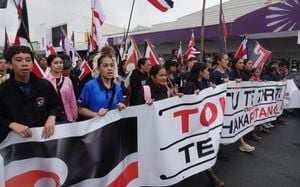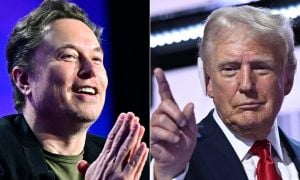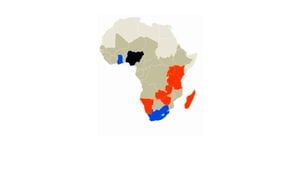The COP29 climate negotiations taking place in Baku, Azerbaijan, are sharply focused on one overarching question: How will the world finance the transition to net-zero emissions and concurrently fortify communities against increasingly severe climate impacts? Countries are grappling with this challenge, particularly as the stakes have never been higher for developing nations.
Since the Industrial Revolution, countries have relied heavily on fossil fuels, with regions like North America and Europe contributing significantly to global emissions — approximately 60% over time. Conversely, countries within the Global South, including regions like Africa and South America, are least responsible for these emissions but bear the brunt of climate change consequences. This imbalance underpins the discussions at COP29, highlighting the urgent need for climate finance aimed at supporting these vulnerable nations.
The negotiations have moved forward, albeit cautiously. While the rich nations convening are hesitant to commit large sums to support climate adaptation and mitigation, alternative funding strategies have emerged. Analysts suggest diverse financial sources must be tapped to reach the trillions needed for effective action — especially since developing nations require significant assistance to adapt to climate challenges.
Among the approaches recognized are contributions from multilateral development banks and encouragement for private sector investments, which could drastically change the funding dynamics of climate initiatives. Current estimates suggest around $1 trillion will be necessary annually by 2030 to address the adaptation and mitigation needs of these countries, and this figure is projected to rise to $1.3 trillion by 2035.
But what does this all really mean? For developing countries, the financial landscapes are often muddled with debt from previous development loans, and they seek significant new public funding commitments unencumbered by excessive conditions. Activists, leaders, and negotiators at COP29 stress the idea of equitable access to financing, which is increasingly recognized as fundamental to creating resilient low-emission economies.
The talks include discussions around the Loss and Damage Fund, initiated following last year's COP discussions. This fund aims to provide financial support for developing nations grappling with previous, current, and future climate disasters. Nevertheless, securing this funding poses its own challenges, especially considering there are no guarantees it will translate immediately to tangible support.
UNFCCC Executive Secretary Simon Stiell termed this year’s negotiations as the “stand-and-deliver COP,” underscoring the necessity for countries to step up their climate aid pledge. Central to these talks is the commitment to structure financing effectively to cater to the needs of the nations most affected by climate disasters.
While some nations have shown movement, for example, Brazil's new climate plan advocating substantial emissions cuts, the lack of concrete goals for fossil fuel production remains concerning for those who advocate thorough measures against climate change. Brazil's Nationally Determined Contribution (NDC) showcases its intention to balance economic growth with climate responsibility, aiming for significant emissions reduction by 2035 and carbon neutrality by 2050. The nation's approach will undoubtedly set precedents for discussions over the next year as it prepares to host COP30.
Heading toward restoration of climate finance commitments and increased allocations from developed countries adds layers of complexity to COP29. The backdrop of inflation and geopolitical tensions has led to skepticism stemming from the harsh realities of priorities within each country involved. Engaging these dynamics requires consensus-building on how to unify diverse funding mechanisms dispersed across different institutions, highlighting transparency and efficacy as key action points.
Additional discussions center around the Green Climate Fund and Adaptation Fund, which have their priorities etched out for the conference, yet the real test will emerge on how these pledges translate to action. Current financing measures, calculated at around $661 billion, are clearly insufficient to tackle the extensive climate challenges present.
COP29's agenda emphasizes addressing the financing gap with urgency, as communities worldwide face unsustainable change. The framework for climate funding must include parameters of equity, sustainability, and predictability, targeting the developmental aspirations of nations caught at the mercy of environmental degradation — exacerbated by the habits and historical emissions of wealthier regions.
Finally, it is evident from extensive discussions and commitments made so far, the path to resuscitating climate finance is not mere rhetoric but demands actionable outcomes and international cooperation to bolster efforts against the widening climate crisis. The success or failure of this conference could very well redefine the climate dialogue, placing the fountain of fiscal responsibility squarely on the shoulders of those who have contributed least to the problem.



